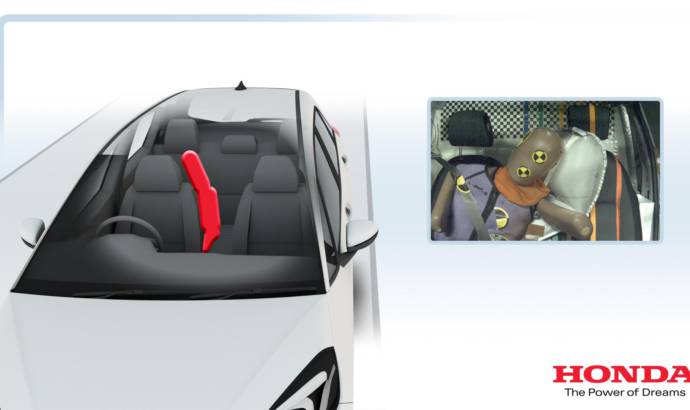Honda recently unveiled the new generation Jazz and now is sharing some light on the car’s safety systems. Among them, a very special innovation. The new front centre airbag is fitted within the back of the driver’s seat and expands into the space between driver and passenger. This new airbag, one of 10 in the new Jazz, helps to avoid direct contact and reduce impact between a driver and a passenger in the event of a side-on collision.
In order to ensure the airbag is accurately placed to deliver maximum protection during deployment, the airbag uses three attachment tethers which guide the airbag around the driver in a curve. To realise this new feature, the engineering team developed the airbag unit to fit within the upper bolster of the newly designed driver’s seat.
The new front centre airbag works in concert with two other features in the event of a side on collision. The seat belt pre-tensioners for both driver and passenger work to reduce lateral occupant movement and are further supported by the centre armrest which has increased in height. Overall the impact of this new approach can reduce injury to the head by 85% for near-side passenger and 98% for far-side passenger (Honda internal testing).
Further improvements for new Jazz include the rear seat i-side Airbag System. This unique double-structure airbag, installed in the rear seat pad, activates to protect rear occupants from impacts against the door and C-pillar in the event of side-on collisions. The airbag is also designed in compact size in order not to detract from the unique magic seat function of Jazz.
In addition to the new front-centre airbag, an SRS airbag system in front of the driver’s knee reduces impact on the lower limbs and contributes to the improvement of occupant protection performance for the head and chest by supressing forward movement of the entire body.
The all-new Jazz incorporates Honda’s proprietary Advanced Compatibility Engineering (ACE) body structure technology that forms the foundation for excellent passive safety performance, enhancing occupant crash protection.
A network of connected structural elements distributes crash energy more evenly throughout the front of the vehicle, reducing the forces transferred to the passenger compartment. ACE not only protects the car and its passengers by dispersing the collision energy throughout the body structure, but it also reduces the collision energy against the other vehicle too. Its safety performance helps protect occupants from collisions with large and small vehicles alike.



